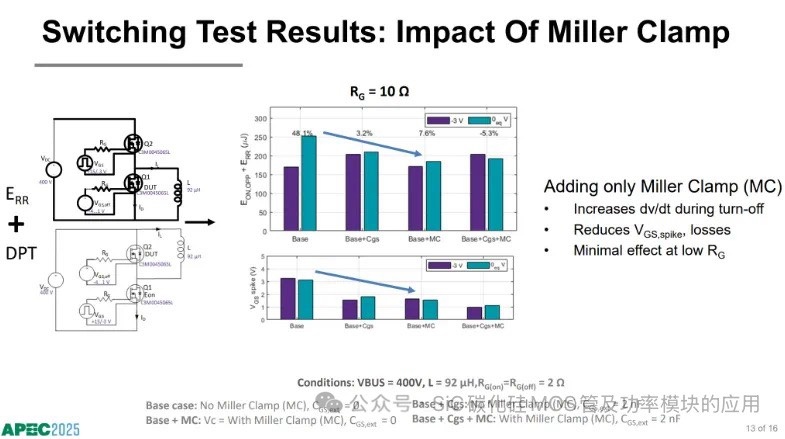SiC MOSFET Eon, Err, driver voltage Question
Hi AE team,
I saw the speek topic of WOLF at PCIM 2025 and have some question need you help:
- Can I clearly understand how much of the loss is attributable to Eon and Err respectively?
2. Because I want to understand why the Eon and Err during the 0V turn-off event perform better than those during the -3V turn-off event.
3. If conduction during the dead time can be measured, would 0V turn-off be better than -3V turn-off?
Comments
-
Thank you for your post, it has been approved and we will respond as soon as possible.
0 -
Hello WEN,
Thank you for your questions, you can refer to this Application Note for more details:Turn-Off Gate Voltage Considerations for SiC MOSFETs
- The Application Note talks about the the separate impact on Eon in section 4.3 and Err in section 4.2.
- In most scenarios, you'll see Eon, Err increasing with increasing Vgs(off) from -3V to 0V. Rg(on) and Rg(off) selection also have a huge impact on these losses at different turn-off voltages. Section 5.1 discusses the graph you shared which is at Rgon = Rgoff = 10Ω at Tj = 150 C. This section discusses the same graph at Rgon = Rgoff = 2Ω and you'll notice the the total losses are consistently very similar (or slightly higher) at 0eqV. I think the key takeaway from this section is that having a Cgs(ext) and Miller Clamp can really help to reduce the Vgs spike therefore providing similar performance with the -3V and 0eqV case. A quick reference on selecting these is below:
3. You're right, if the dead-time is significant, 0V could potentially improve the efficiency of the converter. This is discussed in section 5.2, 5.3 and 5.4 of the application note with a Synchronous Boost Converter testing.
Let me know if you need clarification on anything. Thank you!
0 -
Hi, I hope that this answered your question. I will close this discussion for now but if you have a follow up question, please "Start a New Discussion" and we would be glad to support you further.
0


